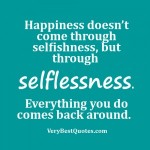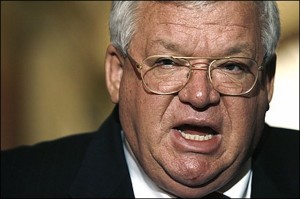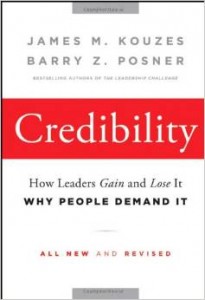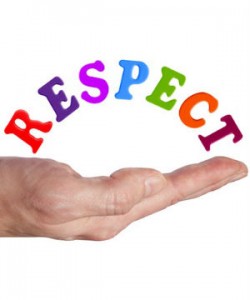Part 4 in a series on professionalism.
Criteria 4: Selfless, Not Selfish: Puts the other person’s needs first.
 How different would the world be today if more business leaders thought about other people’s needs when making important decisions rather than just thinking of their own? You know the answer. The world would be a far better place.
How different would the world be today if more business leaders thought about other people’s needs when making important decisions rather than just thinking of their own? You know the answer. The world would be a far better place.
The most impressive professionals that I have either worked with directly or whom I have admired from afar are those who consider everyone’s needs, not just their own. Their world view is broader and more inclusive.
This past week was a busy one for blockbuster news stories, many of which encouraged us as Americans to broaden our national conscience, to be more selfless, not selfish.
Marriage Equality: The Constitution supports equality, all types of equality, for all people. The pursuit of happiness is one example. With the Supreme Court’s ruling that same-sex marriage is now legal in every state nationwide, people who were previously denied the right to be married simply because of their sexual orientation are now able to make a legal commitment to their partner. Many American companies welcome – and extend benefits to – the partners of their gay employees. Those companies have it right.
Immigrant Equality: Donald Trump was “trumped” by NBCUniversal because of his overgeneralized, derogatory comments about Mexican immigrants. As a result, NBCUniversal announced that the Miss USA and Miss Universe pageants (partnerships between Trump and NBCUniversal) will no longer be televised by that network; also, NBC is seeking a new host of the popular program, The Apprentice, which Trump has hosted since its inception. How do you – and your company – treat immigrant workers (not just from Mexico…from every country)? Do you welcome them or treat them like second class citizens?
Race Equality: The issue of racism is very much alive in America and has been for centuries. For anyone who says that racism does not exist, encourage that person to sit and have a conversation with any person of color – African-American, Latin-American, Asian or Native American – and ask if it exists. It just may change their perspective. An excellent series of interviews entitled Racism in America: How Did We Get Here? appeared on the popular PBS-TV programs, Bill Moyers Journal and Moyers & Company. Many companies today offer diversity programs or committees to tackle these issues in the workplace. How well is your diversity initiative working? What suggestions for improvement could you make?
Overtime Equality: Expected sometime this week, President Obama hopes to present a new rule that raises the current cap for overtime pay (current cap is based on a salary of up to $23,660/year; proposed cap would be up to $50,440/year). This rule secures overtime pay to employees working more than a 40-hour work week. President Franklin D. Roosevelt’s New Deal (remember that from civics class?) guaranteed Americans who worked more than 40 hours per week overtime or time-and-a-half pay. Rules have been relaxed in recent decades mostly in the retail and restaurant industries where adding the title of “supervisor” often doesn’t increase the pay to workers who work on average 50-60 hours per week. Do you value the additional time your employees put in? Do you extend appropriate compensation to those who have earned it?
To demonstrate professionalism requires confidence, compassion and grace. To move your thinking, your company’s thinking, and the national conscience forward requires acts of kindness, inclusion and selflessness.










